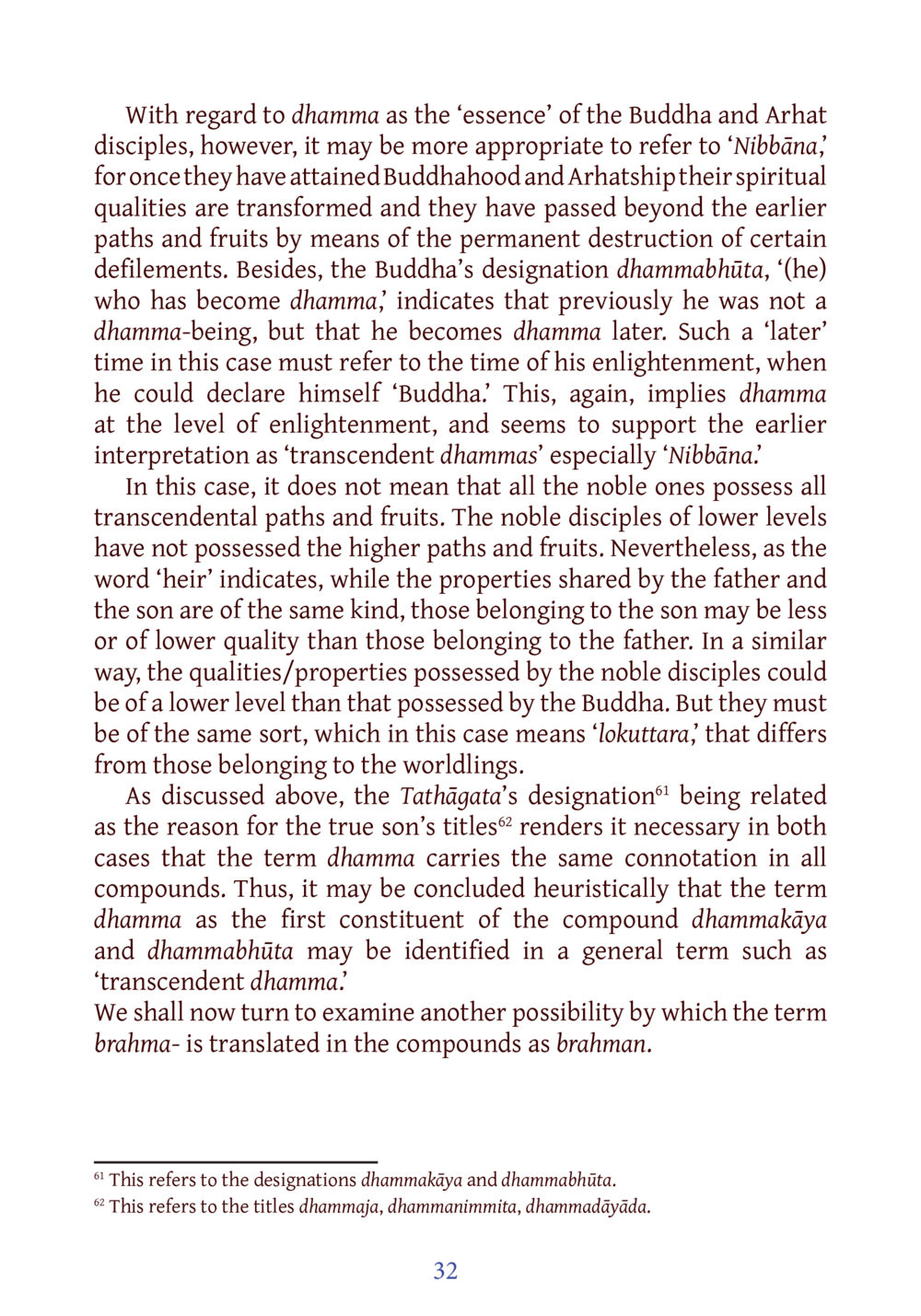Understanding Dhamma and Nibbāna in Buddhism : หน้า 53/141
DIRI Journal : หน้า 53/141 Explore the essence of dhamma and its relationship to Nibbāna and the Buddha's enlightenment.
7 ครั้ง

สรุปเนื้อหา
This text explores the concept of dhamma in relation to the Buddha and Arhat disciples, particularly the notion of Nibbāna as the essence of their enlightenment. It argues that dhamma, especially in the context of 'dhamabhuta,' signifies a transformation that occurs with enlightenment. It distinguishes between the qualities of the Buddha and those of lower-level noble disciples, while establishing that they share the same type of transcendent dhamma. The analysis proposes that 'lokuttara' qualities differ from those of ordinary beings. The conclusion hints at the significance of 'transcendent dhamma' as part of the dhammakāya and dhammabhuta compounds.
หัวข้อประเด็น
-Dhamma and Nibbāna
-Transformation in Enlightenment
-Buddha vs. Noble Disciples
-Transcendental Qualities
-Understanding Lokuttara
ข้อความต้นฉบับในหน้า
หน้าหนังสือทั้งหมด













































































































































